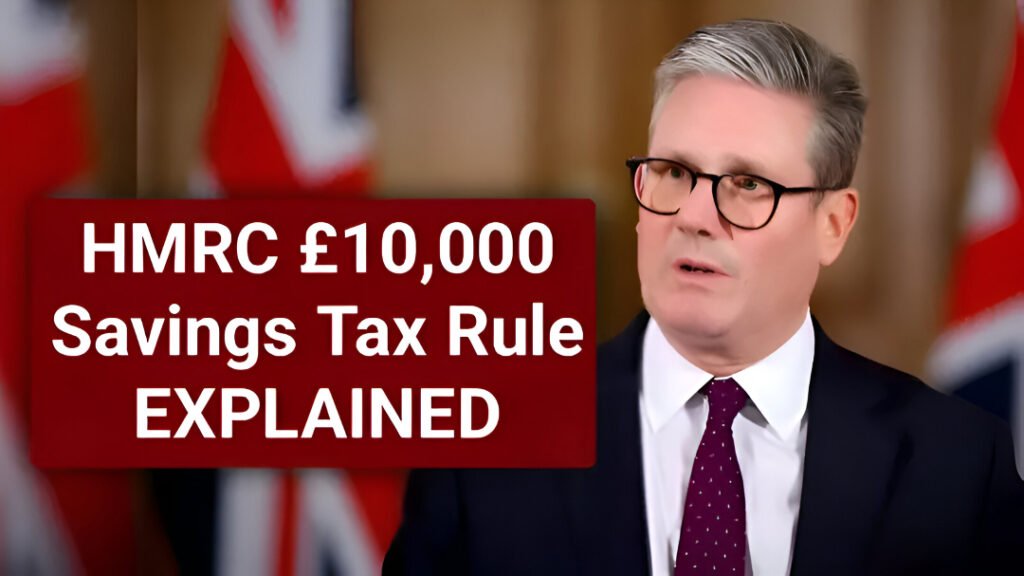The UK government, through HM Revenue & Customs (HMRC), has introduced the £10,000 savings tax rule in 2025, impacting how interest income is taxed. This rule determines how much interest you can earn without paying tax, making it essential for savers to understand. It affects savings accounts, ISAs, and other interest-earning products, so knowing it helps you avoid unexpected charges and optimise your savings strategy.
What is the HMRC £10,000 Savings Tax Rule?
The £10,000 savings tax rule is a threshold allowing savers to earn up to £10,000 in interest without paying tax, under the Personal Savings Allowance. It simplifies taxation for individuals with multiple accounts. Knowing this rule helps you make informed choices about where to save and how to manage accounts to keep more of your earnings.
How the Personal Savings Allowance Works
Basic rate taxpayers can earn up to £1,000 in savings interest tax-free, while higher rate taxpayers get £500. The £10,000 rule complements this by setting a clear maximum limit. This combination ensures savers can plan effectively without getting bogged down in complex tax calculations, helping them focus on maximising returns.
Who Qualifies for the £10,000 Savings Tax Rule?
The rule applies to UK residents earning interest from savings accounts, ISAs, and certain bonds. Pensioners and individuals with large savings often benefit most. However, not all interest types qualify, so it’s important to understand the details to avoid miscalculations that could cost money.
How Savings Income Tax is Calculated
Interest above the £10,000 threshold is taxed based on your income tax band. Basic rate taxpayers pay less than higher rate taxpayers, but keeping track of all interest across accounts is crucial to avoid unexpected bills. Planning ahead can help you structure savings efficiently and minimise taxation.
Tax-Free Interest Benefits under the Rule
This rule gives savers the advantage of earning a substantial amount tax-free. Especially in times of rising interest rates, it’s a valuable opportunity to keep more of your money. Savers can structure their deposits strategically to take full advantage of this allowance, boosting their overall savings growth.
HMRC Savings Allowance: Key Figures for 2025
In 2025, basic rate taxpayers have a £1,000 savings allowance, higher rate taxpayers have £500, and additional rate taxpayers have none. Knowing these figures alongside the £10,000 rule enables you to plan better and keep more interest tax-free, particularly if you have multiple accounts or sources of interest income.
Impact of the £10,000 Rule on Pensioners
Pensioners often rely on interest income for living expenses. This rule is particularly beneficial for them, as it allows them to keep more of their income without extra tax. Pensioners should carefully track their interest income to make the most of these allowances while protecting their retirement savings.
How to Avoid Paying Unnecessary Tax
Using tax-free accounts like ISAs and spreading savings across accounts can help you stay within the limit and reduce tax liability. Keeping records and reviewing accounts regularly ensures that you remain compliant while making the most of available allowances. This strategy saves money and gives peace of mind.
HMRC Reporting Requirements
HMRC requires reporting interest over £10,000, even if it comes from multiple accounts. Keeping clear records is crucial to avoid penalties. Using HMRC’s online tools can make this easier and ensure compliance, helping savers manage taxes without unnecessary stress.
Final Thoughts
The HMRC £10,000 savings tax rule is more than just a technical detail — it can significantly impact your savings. Understanding and applying this rule ensures you maximise tax-free interest, safeguard your financial future, and make smarter decisions with your money in 2025 and beyond.
